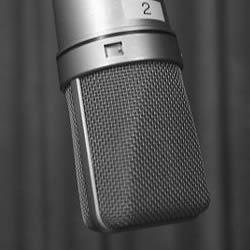Now for the second entry in your audio portfolio. Â This one will be a response to the work of your peers.
Aims of the Exercise
For you to:
- Unpack how sounds influence other people’s lives in ways both similar and different from yours.
- Use voice-over narration to respond to your peers’ work.
- Consider how you represent yourself (e.g., what you tell or don’t tell your audience) through your own voice.
- Gain some significant experience (i.e., more than you did with your audiography) in editing audio.
Constraints for Audio
- Minimum eight samples from the audiographies in your cluster (two per audiography)
- Between two and three minutes long
- One text title (for your blog entry), but no other text
- Record voice-over only
- Editing: only your voice, overlap, and duration (no effects)
- Due: Thursday, October 21st
Steps
(1) Determine who is in your research and support cluster. Almost every cluster will have five people. Â One will have six. Get each other’s contact information.
(2) On the blog, listen to your cluster’s audiographies. As you do, take notes. Recall Schafer’s terms. What sticks out? In terms of both meaning and aesthetics, what is most striking about each audiography? What have you learned about your peers?
(3) Download your peers’ audiographies. This approach will differ depending on your browser. Â In Google Chrome, you can simply right-click on the player and select “Save audio as.” In other browsers, you’ll need to first log-in to WordPress, then click “edit this” at the bottom of your peer’s entry, enter the back-end of the WordPress post, copy the URL from the editing pane, paste it into your address bar, and — finally — select “file” and “save page as” (an MP3) in your browser.
(4) One at a time, import the audiographies into Audacity and edit them down to a few samples that interest you. I recommend dedicating a track to each sample. So you are looking at (at least) nine tracks for this project (a minimum of eight tracks for the samples and one for your voice). Â
(5) When you are finished editing all of the audiographies, determine a story. What links the samples? Or how might you tie them together through their differences and similarities? Start writing out your story. Give it a title (which will become the title of your audio blog entry). Please note: based on our discussions during Thursday’s class, your story should either implicitly or explicitly mobilize (read: “put to use”) Schafer’s terms for studying cultural soundscapes. In short, it should function as a demonstration of what you learned.
(6) Record and add your voice track. Most people find it easier to write voice-over before speaking it. However, you’ll want to practice it enough so that it doesn’t sound like you are just reading what’s in front of you.
(7) Edit as necessary, remembering that you should overlap your voice with the samples. You are also welcome to overlap the samples, if need be.
(8) Play it back and assess how you are treating your peers’ work. Don’t be rude to them and recognize that they worked hard to make their audiographies. Â What’s more, the sounds involved mean something to them.
(9) Save the project, export it as an MP3, and upload it to the course audio blog.
Outcomes
(1) Your “re: audiography” is an experiment in responding to other people’s audio through audio. It should be rhetorically aware of its audience (i.e., your cluster).
(2) Your “re: audiography” should also gather a minimum of eight samples from your peers’ work, organize them through a story that is persuasive and engaging for listeners, and add voice-over in such a way that “shows” rather than “tells” what you know about cultural soundscapes. In other words, the voice-over track should do more than describe soundscapes you hear. It should be critical and self-reflexive. It should help audiences produce knowledge, not just give them information.
Schedule
Your audiography is due on our audio blog by the start of class on Thursday, October 21st. The blog entry should include both a title for your audio story and your playable Mp3.  That’s it. Please categorize it under “re: audiography.†By a comments on the blog, I will be responding directly to this entry.







